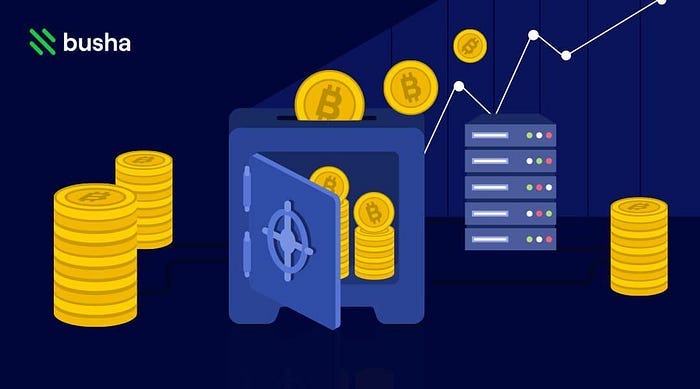For public corporations, one of many easiest methods to speak monetary stability to shareholders is thru dividend funds. The most established corporations typically share a portion of their income with buyers, rewarding them with dividends — both as a money distribution or further shares of inventory. For buyers, dividends present a gradual stream of passive revenue.Owning dividend-paying corporations by way of exchange-traded funds (ETFs) may be extremely environment friendly. A dividend ETF is a fund that invests completely in dividend-paying corporations. Fund managers choose these corporations primarily based on particular attributes reminiscent of dimension, business, geographic area, and dividend historical past. Next, they group them right into a basket of holdings representing an funding class reminiscent of “dividend aristocrats.”Once you choose a dividend funding model, each holding in that ETF can have the same profile.For instance, suppose you select a fund that solely invests in large-cap corporations with a historical past of constantly paying dividends. In that case, a fund supervisor can’t deviate from that funding technique. This precept is essential because the funding model you select will decide the various levels of threat and the potential returns.For retail buyers, ETFs are handy as a result of they supply instantaneous diversification at a low price. This additional advantage makes dividend ETFs interesting to market contributors, particularly when choosing shares requires a sure degree of funding information.Top dividend ETFs Below are a few of the most generally held dividend ETFs available on the market. (Data as of June 1, 2021)Vanguard Dividend Appreciation ETF (VIG) VIG tracks the efficiency of the NASDAQ U.S. Dividend Achievers Select Index. The funding technique focuses on dividend progress, deciding on corporations which have constantly elevated dividend funds for at the very least a decade.Fund’s dividend yield: 1.80 %Top holdings: Microsoft (MSFT), JPMorgan Chase (JPM), and Johnson & Johnson (JNJ)Expense ratio: 0.06 %Asunits below administration: ~$60 billionVanguard High Dividend Yield ETF (VYM) VYM tracks the efficiency of the FTSE High Dividend Yield Index. The index selects high-yield dividend-paying corporations primarily based within the U.S., excluding REITs (actual property funding trusts).Fund’s dividend yield: 2.82 %Top holdings: Home Depot (HD), Procter & Gamble (PG), and Bank of America (BAC)Expense ratio: 0.06 %Asunits below administration: ~$38 billionSPDR S&P Dividend ETF (SDY)SDY tracks the efficiency of the S&P High Yield Dividend Aristocrats Index. The index screens for corporations which have constantly elevated dividend funds for at the very least 20 consecutive years.Fund’s dividend yield: 3.05 %Top holdings: Exxon Mobil (XOM), IBM (IBM), and AbbVie (ABBV)Expense ratio: 0.35 %Asunits below administration: ~$20 billioniShares Select Dividend ETF (DVY) DVY tracks the efficiency of the Dow Jones Select Dividend Index. The index selects high-dividend yield corporations — about 100 of them — primarily based within the United States.Fund’s dividend yield: 2.92 %Top holdings: Altria Group (MO), ONEOK (OKE), and Pfizer (PFE)Expense ratio: 0.39 %Asunits below administration: ~$19 billionProShares S&P 500 Dividend Aristocrats ETF (NOBL) NOBL tracks the efficiency of the S&P 500 Dividend Aristocrats Index. The index screens for multinational family names with a historical past of accelerating dividends for at the very least 25 years, with a few of them doing so for greater than 40 years.Fund’s dividend yield: 1.75 %Top holdings: Nucor (NUE), Franklin Resources (BEN), and Target (TGT)Expense ratio: 0.35 %Asunits below administration: ~$9 billionHow dividends workDividend funds are normally issued to shareholders each quarter, though, in some circumstances, there may be particular dividends that act as a one-time bonus. To be entitled to an upcoming dividend, a shareholder should personal an organization’s inventory as much as and together with what’s often called the ex-dividend date.Investors pay explicit consideration to the dividend yield, highlighting how a lot an organization or fund pays in correlation to its inventory worth. Dividend yields are calculated by taking the annual dividend fee and dividing it by the share worth. The yield is proven as a share.For instance, if an organization’s annual dividend fee is $8 and the share worth is $100, you’ll see a dividend yield of 8 % with a quarterly distribution of $2.To be certain, a excessive yield doesn’t all the time imply a stable funding alternative. Indeed, many buyers view the best yields as a purple flag as an organization’s shares might need taken successful, inflicting yields to rise. Or, maybe, an organization could also be attempting to lift new cash by attractive buyers with excessive yields.As a rule, make sure you have a look at an organization’s total monetary image earlier than investing. A dividend fee is simply the icing on the cake.How to spend money on dividend ETFsA stable dividend technique is a vital part of each investor’s portfolio. Since the Thirties, dividends have accounted for 41 % of the S&P 500’s whole returns, based on analysis by Hartford Funds. And when dividends are reinvested, the returns are even increased, accounting for 84 % of the S&P’s whole returns since 1970.Inherently, dividend investing tends to be much less dangerous. Companies ready to concern common funds are sometimes extra cash-rich than these nonetheless attempting to develop their companies. Well-established names even have a historical past of boosting their dividend payouts yearly and take plenty of delight in doing so.When selecting dividend ETFs, listed here are 4 steps to think about:
Determine your monetary objectives: The kind of investments you select is dependent upon what you are attempting to attain. For instance, somebody about to retire can have a conservative strategy to investing. So all the time let your monetary goals drive your decision-making.
Research dividend funds: When deciding on dividend ETFs, take note of components like dividend historical past, dividend yield, the fund’s efficiency, expense ratios, prime holdings, and belongings below administration. Investors can discover this info in a fund’s prospectus.
Outline your asset combine: Before investing, do a listing of what you personal and the way you wish to allocate your belongings. Remember, the hot button is to stay diversified.
Know what you personal: By periodically reviewing your investments, you possibly can take cost of your funds and make any changes wanted. Leverage any free sources out of your dealer, like assembly with a monetary planner, and all the time ask questions. Ultimately, there’s no such factor as a hands-off funding.
Like some other funding, dividend ETFs are vulnerable to losses. The magnitude of potential losses is tied to the extent of threat contained within the portfolio. So a fund that invests closely in doubtlessly riskier belongings like worldwide corporations can have a really totally different threat profile than a fund that invests in established, tried-and-true names. Macroeconomic components just like the rate of interest surroundings additionally play an element.Depending on the kind of funding account you personal, dividend distributions are taxed as common revenue or at a lowered charge below particular issues. These guidelines solely apply for holdings outdoors tax-advantaged accounts like a 401(ok) or an IRA.History reveals that dividends have been a major supply of revenue for buyers. When constant dividend funds and rising inventory values are mixed, they could be a highly effective wealth-building device.Learn extra:Editorial Disclaimer: All buyers are suggested to conduct their very own unbiased analysis into funding methods earlier than investing choice. In addition, buyers are suggested that previous funding product efficiency isn’t any assure of future worth appreciation.




